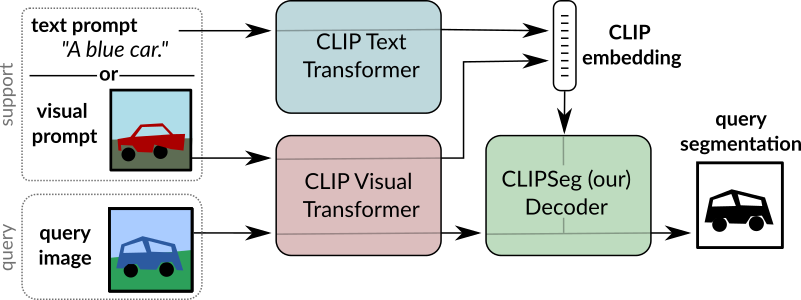* Fixed typo: insted to instead * Fixed typo: relase to release * Fixed typo: nighlty to nightly * Fixed typos: versatible, benchamarks, becnhmark to versatile, benchmark, benchmarks * Fixed typo in comment: quantizd to quantized * Fixed typo: architecutre to architecture * Fixed typo: contibution to contribution * Fixed typo: Presequities to Prerequisites * Fixed typo: faste to faster * Fixed typo: extendeding to extending * Fixed typo: segmetantion_maps to segmentation_maps * Fixed typo: Alternativelly to Alternatively * Fixed incorrectly defined variable: output to output_disabled * Fixed typo in library name: tranformers.onnx to transformers.onnx * Fixed missing import: import tensorflow as tf * Fixed incorrectly defined variable: token_tensor to tokens_tensor * Fixed missing import: import torch * Fixed incorrectly defined variable and typo: uromaize to uromanize * Fixed incorrectly defined variable and typo: uromaize to uromanize * Fixed typo in function args: numpy.ndarry to numpy.ndarray * Fixed Inconsistent Library Name: Torchscript to TorchScript * Fixed Inconsistent Class Name: OneformerProcessor to OneFormerProcessor * Fixed Inconsistent Class Named Typo: TFLNetForMultipleChoice to TFXLNetForMultipleChoice * Fixed Inconsistent Library Name Typo: Pytorch to PyTorch * Fixed Inconsistent Function Name Typo: captureWarning to captureWarnings * Fixed Inconsistent Library Name Typo: Pytorch to PyTorch * Fixed Inconsistent Class Name Typo: TrainingArgument to TrainingArguments * Fixed Inconsistent Model Name Typo: Swin2R to Swin2SR * Fixed Inconsistent Model Name Typo: EART to BERT * Fixed Inconsistent Library Name Typo: TensorFLow to TensorFlow * Fixed Broken Link for Speech Emotion Classification with Wav2Vec2 * Fixed minor missing word Typo * Fixed minor missing word Typo * Fixed minor missing word Typo * Fixed minor missing word Typo * Fixed minor missing word Typo * Fixed minor missing word Typo * Fixed minor missing word Typo * Fixed minor missing word Typo * Fixed Punctuation: Two commas * Fixed Punctuation: No Space between XLM-R and is * Fixed Punctuation: No Space between [~accelerate.Accelerator.backward] and method * Added backticks to display model.fit() in codeblock * Added backticks to display openai-community/gpt2 in codeblock * Fixed Minor Typo: will to with * Fixed Minor Typo: is to are * Fixed Minor Typo: in to on * Fixed Minor Typo: inhibits to exhibits * Fixed Minor Typo: they need to it needs * Fixed Minor Typo: cast the load the checkpoints To load the checkpoints * Fixed Inconsistent Class Name Typo: TFCamembertForCasualLM to TFCamembertForCausalLM * Fixed typo in attribute name: outputs.last_hidden_states to outputs.last_hidden_state * Added missing verbosity level: fatal * Fixed Minor Typo: take To takes * Fixed Minor Typo: heuristic To heuristics * Fixed Minor Typo: setting To settings * Fixed Minor Typo: Content To Contents * Fixed Minor Typo: millions To million * Fixed Minor Typo: difference To differences * Fixed Minor Typo: while extract To which extracts * Fixed Minor Typo: Hereby To Here * Fixed Minor Typo: addition To additional * Fixed Minor Typo: supports To supported * Fixed Minor Typo: so that benchmark results TO as a consequence, benchmark * Fixed Minor Typo: a To an * Fixed Minor Typo: a To an * Fixed Minor Typo: Chain-of-though To Chain-of-thought
4.4 KiB
CLIPSeg
Overview
The CLIPSeg model was proposed in Image Segmentation Using Text and Image Prompts by Timo Lüddecke and Alexander Ecker. CLIPSeg adds a minimal decoder on top of a frozen CLIP model for zero-shot and one-shot image segmentation.
The abstract from the paper is the following:
Image segmentation is usually addressed by training a model for a fixed set of object classes. Incorporating additional classes or more complex queries later is expensive as it requires re-training the model on a dataset that encompasses these expressions. Here we propose a system that can generate image segmentations based on arbitrary prompts at test time. A prompt can be either a text or an image. This approach enables us to create a unified model (trained once) for three common segmentation tasks, which come with distinct challenges: referring expression segmentation, zero-shot segmentation and one-shot segmentation. We build upon the CLIP model as a backbone which we extend with a transformer-based decoder that enables dense prediction. After training on an extended version of the PhraseCut dataset, our system generates a binary segmentation map for an image based on a free-text prompt or on an additional image expressing the query. We analyze different variants of the latter image-based prompts in detail. This novel hybrid input allows for dynamic adaptation not only to the three segmentation tasks mentioned above, but to any binary segmentation task where a text or image query can be formulated. Finally, we find our system to adapt well to generalized queries involving affordances or properties

CLIPSeg overview. Taken from the original paper.
This model was contributed by nielsr. The original code can be found here.
Usage tips
- [
CLIPSegForImageSegmentation] adds a decoder on top of [CLIPSegModel]. The latter is identical to [CLIPModel]. - [
CLIPSegForImageSegmentation] can generate image segmentations based on arbitrary prompts at test time. A prompt can be either a text (provided to the model asinput_ids) or an image (provided to the model asconditional_pixel_values). One can also provide custom conditional embeddings (provided to the model asconditional_embeddings).
Resources
A list of official Hugging Face and community (indicated by 🌎) resources to help you get started with CLIPSeg. If you're interested in submitting a resource to be included here, please feel free to open a Pull Request and we'll review it! The resource should ideally demonstrate something new instead of duplicating an existing resource.
- A notebook that illustrates zero-shot image segmentation with CLIPSeg.
CLIPSegConfig
autodoc CLIPSegConfig - from_text_vision_configs
CLIPSegTextConfig
autodoc CLIPSegTextConfig
CLIPSegVisionConfig
autodoc CLIPSegVisionConfig
CLIPSegProcessor
autodoc CLIPSegProcessor
CLIPSegModel
autodoc CLIPSegModel - forward - get_text_features - get_image_features
CLIPSegTextModel
autodoc CLIPSegTextModel - forward
CLIPSegVisionModel
autodoc CLIPSegVisionModel - forward
CLIPSegForImageSegmentation
autodoc CLIPSegForImageSegmentation - forward